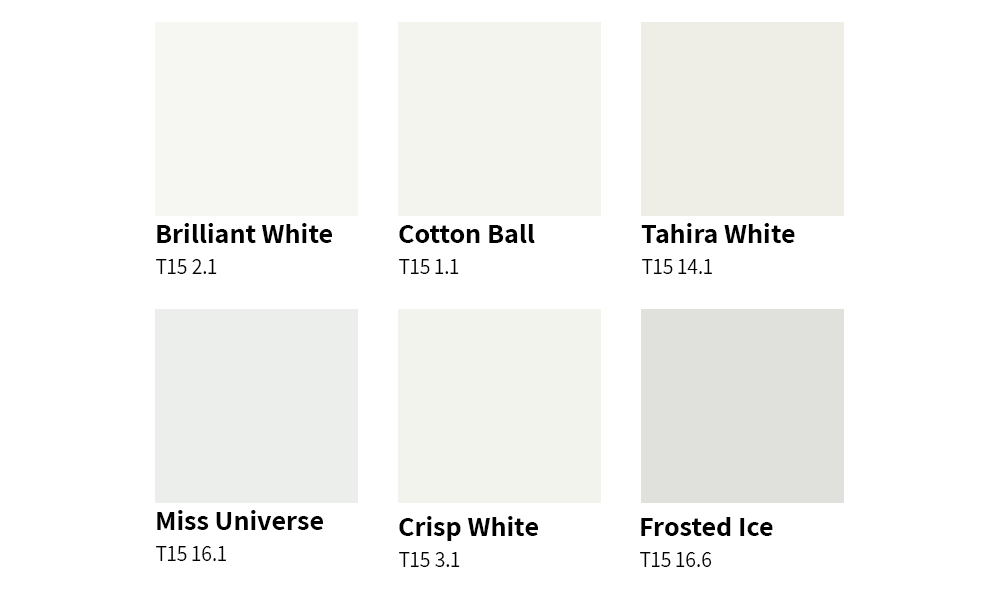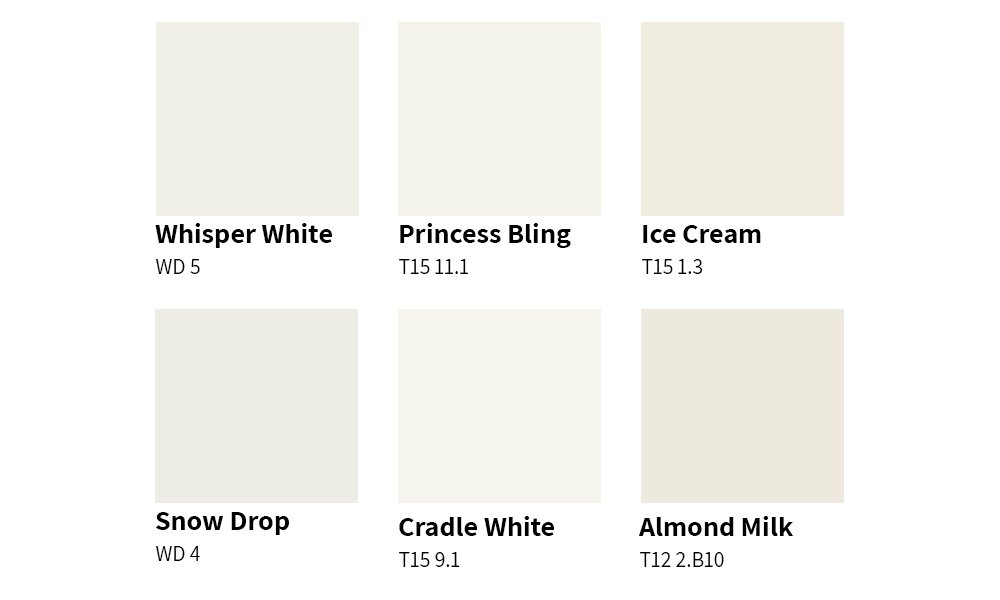The quest for the perfect white
With so many whites available, the quest to find the perfect shade can be overwhelming. Because of its ability to brighten up rooms and make them appear larger, white will always be on-trend. In this article, we’ll share some tips and tricks to choose the right shade and help you fall in love with this exceptionally versatile and popular colour for your home.
Where to begin for interiors?
Ask yourself what you want to achieve with your space. Do you want to make a small space feel bigger? Or create a space that allows for a seamless transition from cabinetry to walls, to ceilings and doors? If so, pick a very softly tinted white and use it on all areas. This allows the eye to travel around the room without needing to stop where a new colour begins, creating the illusion of more space and higher ceilings. Make sure you use the appropriate paint on each area – such as a ceiling paint, interior broad wall and a water-based enamel for your doors and trims. A water-based paint will stay true to colour and won’t yellow, which is essential for an all-white colour scheme.
Next, you need to consider the style of your home. Do you have high ceilings with dado board or wainscoting that you want to highlight? Why not try mixing your whites? A bright fresh white paired with a more neutral shade can create an interesting tonal difference and plays to the character of the space you want to transform.
How much light does the space receive? This is an important aspect to consider when beginning your journey with white. Cooler whites tend to work well in north facing rooms. While warmer whites can illuminate a dimly lit space or a south facing room. Dark spaces need warmth in the undertone to create an inviting ambience. However, using cooler toned whites in dimly lit rooms can unfortunately make the space feel grey, adding to the gloom.
Where to begin for exteriors?
When using whites on exteriors, many considerations come into play. The first is, how much sun does your home receive? White without much body on a home that is in full sun for much of the day can create a lot of glare. And we can imagine that wearing sunglasses at 7am as you enjoy your morning cup of tea isn’t ideal!
To avoid this, it’s useful to know that all paint colours have what is called an LRV – Light Reflectance Value. The LRV indicates how light or dark a paint colour will look with 0 being black and white 100. If you have a home where glare may be an issue, for example, if you spend a lot of your time outdoors, then look for whites with LRV numbers ranging from 65-80. Visit our Colour Swatch Shop and use the search function to type in the name of your colour to find out the LRV of your preferred shade.
You can also find LRV numbers on the Coloursmith app, which can also help you settle on your perfect white.
Other factors to consider are the shades of existing substrates and this will of course have influence on the tone of the white you select. It’s also advisable to think about the style of your home, the colour of your roof and windows and where your dwelling is located. And let’s not forget the aesthetic of the other houses on your street, as you want your home to add to the street’s appeal.
Selecting and sampling your whites
The complexity of the white spectrum gives everyone the ability to find the perfect white for their space. But with so many to choose from, it can be hard to know where to begin.
Struggling to see the difference between cool and warm tones? Here are a few examples.
For cooler whites, we suggest the following colours:
And here are our recommendations for warmer whites:
Keep in mind however, that your home’s surroundings will affect the appearance of any paint colour. Therefore, it’s incredibly important that you test them in-store and at home before committing to a shade.
A great starting point is the Taubmans Colour Wall, which you can find at your local Bunnings store. The Colour Wall makes picking a white much easier, as it lays out shades from cooler tones to warmer ones.
Top tip:
Most importantly, sample your whites first. View Taubman’s most popular whites at Coloursmith or trial your colour via a sample pot – it may be the best money you will spend. Get yourself a large piece of cardboard (1m x 1m) and paint three coats of your proposed white. Once dry, move the cardboard around the room to see how the shade looks in natural daylight, artificial light and other areas of your home. The places to pay particular attention to are near the ceiling and near the floor, as these spots tend to have the greatest colour variations. For exteriors, take the same approach - sampling the colour is crucial. Viewing it in full sun and again in areas around the home without a lot of natural light will help you understand how your white will perform.
Happy painting!

 Back to Colour Together page
Back to Colour Together page



